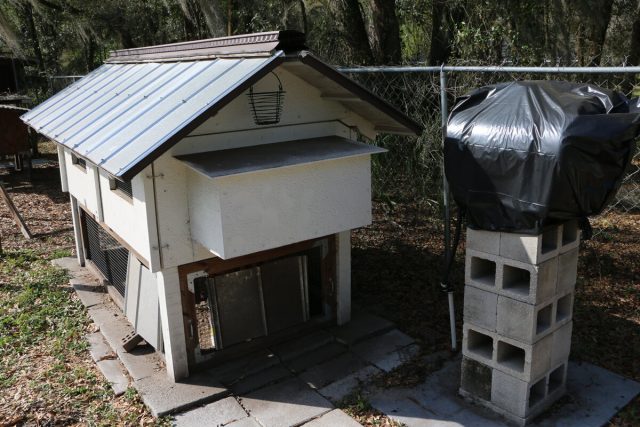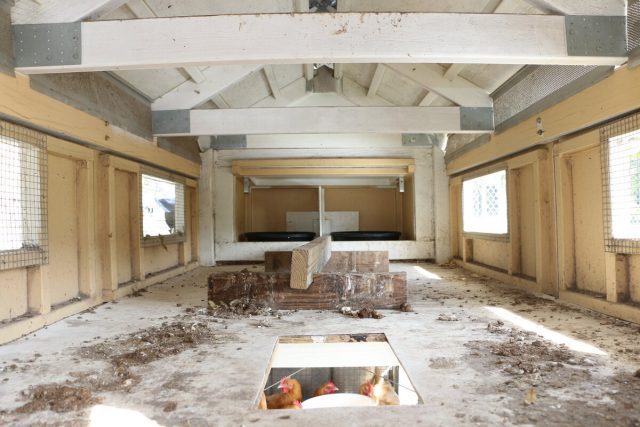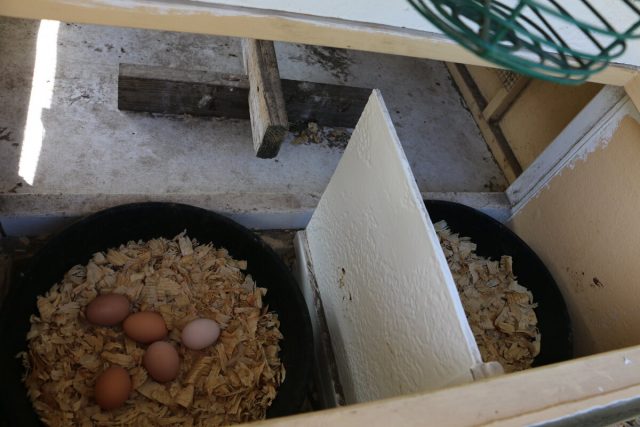A chicken coop can be built from almost any kind of scrap lumber and they usually are. The cheap, light-weight coops are quite popular, and for good reason – but that’s not always the best solution. I have built a number of chicken coops over the years, and each was very different from the others.
I wanted to build a chicken coop that would be my last one. It would be designed and built for the long term. I wanted it to last the rest of my life and then be used for many years after that. This is the first of an occasional series of posts describing this project in the hope that others might get some ideas from it. These were my requirements:
- Long lasting – it would be built using many of the same materials and techniques that a regular house would use.
- Predator-proof
- Easy to maintain
- Aesthetically pleasing – it sits in the back yard and is part of the landscape
- Semi-portable. Though it is stationary, I wanted to be able to relocate it if needed.
- Well ventilated – in this area, protecting chickens from overheating is a major factor
In future posts, we’ll look at some of the features that make it work – as well as a thing or two that I wish I’d done differently. We’ll also look at things like the feeder that I built that results in near-zero food waste – far better than the commercial ones.

End view showing removable nest box and 35 gallon water tank. Wire section below the nest box is removable for access. Feeder is at this end. Metal panel is to keep rain from being blown in and spoiling the feed. A hook provides a convenient place to hold the egg basket.
In the next post, we’ll look at some photos of it as it was being built.







Like the coop, esp. the auto-water system. How many chickens can you get in that one and what kind are those you’re housing?
Looks pretty stout. We did some construction in Orlando for a summer in the mid-90’s. We used to use hurricane straps to hold the roof on and rebar in the cinder blocks the add stability. How do you have it positioned to protect from the strong winds?
I have 6 hens in the coop. One of the biggest mistakes I made in the past (and I’ve made a boat-load of mistakes!) was overcrowding. They need room. They have 4×8 in the interior section, and the same size below. I have a rooster, but he stays in a separate coop – roosters are just too rough on the hens, and that starts to compound other problems.
The roof is not attached to the main section other than just setting on top. It took 4 of us to carry it out from the garage where it was built and then set it on top. Even in a hurricane, it’s not going anywhere. We’ve had 4 hurricanes come through here since I’ve been at this location. There is also a lot of wind shelter from big oak trees.
In one coop we fenced an area about 3xs the coop size and let the chickens run around outside. They go in and lay or roost at will.
This has worked well for the last two years. This give some ability to house more chickens than we could otherwise and cuts the mess down. No trouble with predators to speak of (excepting brer possum that discovered our stash and was promptly advised otherwise).
On the left side of the first photo, you can see the end of a section of fence. That was the pen that I used last time for the same purpose, and this coop is positioned to use it again if needed. The “Inside, looking toward the nest box” photo was taken through the door that would be used for them to go in and out. It seems like I always end up with more eggs than we can use – a lot more. It’s nice to be able to give away eggs to friends and family, but I’d rather not pay for all that feed. Six hens works out well for us. The new feeder has eliminated waste, so the feed bill is very low.
You’re right about the feed. We’re knocking out about 50lbs of the Southern States layer pellets in about a week and a half +/- with about 21 layers and a rooster. Probably should have culled our non-layers before winter but I’m kinda hoping the ones that slacked off would pick back up at the onset of spring before we know which to divest ourselves of. .
Wifey is selling ours to neighbors. Not a big egg eater myself but sure like having those deviled eggs at church functions.
Hoping to add some meat chickens this go-round. They say they are ready to butcher in a matter of a few months if we push em hard. Pretty excited about this venture. After a week old Tractor Supply is selling them for half price.
Thanks for your feed back.
I found out pretty quickly that butchering chickens just isn’t worth my time. I’m glad I did a couple of them just for the experience, but I’m sticking with egg production (I eat a lot of eggs!).
That looks nicer than some of the places I lived in when I was younger. Great job!
Thank you, sir. I could probably say the same thing about a couple of places I lived when I was younger too.